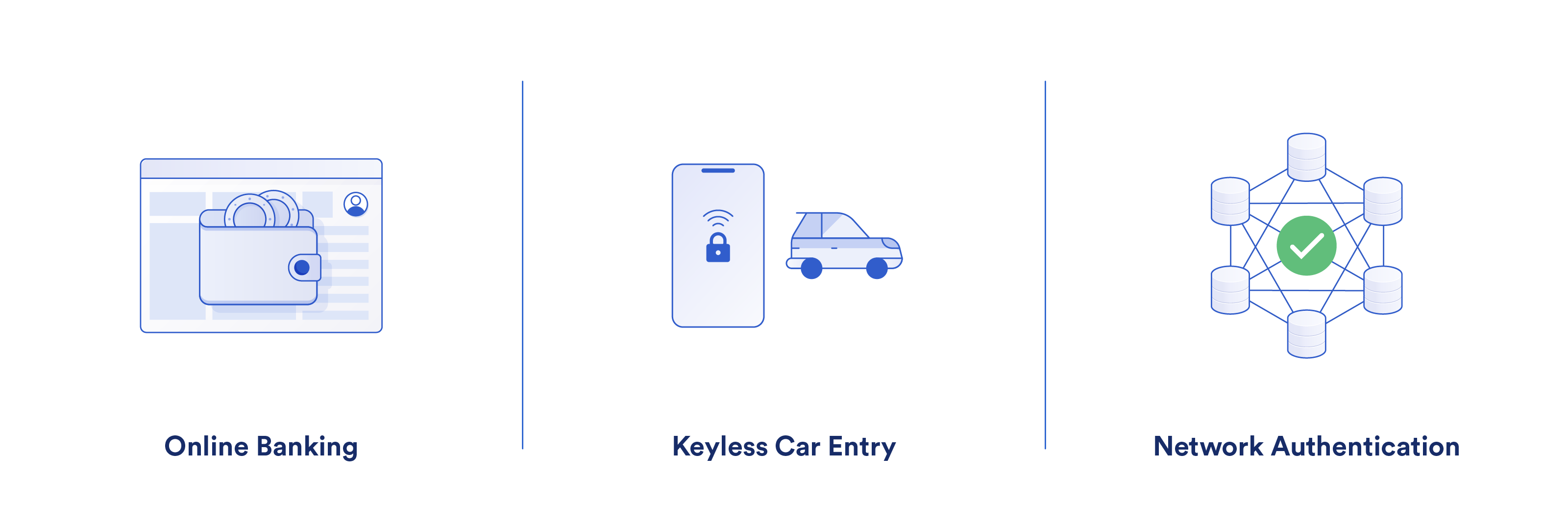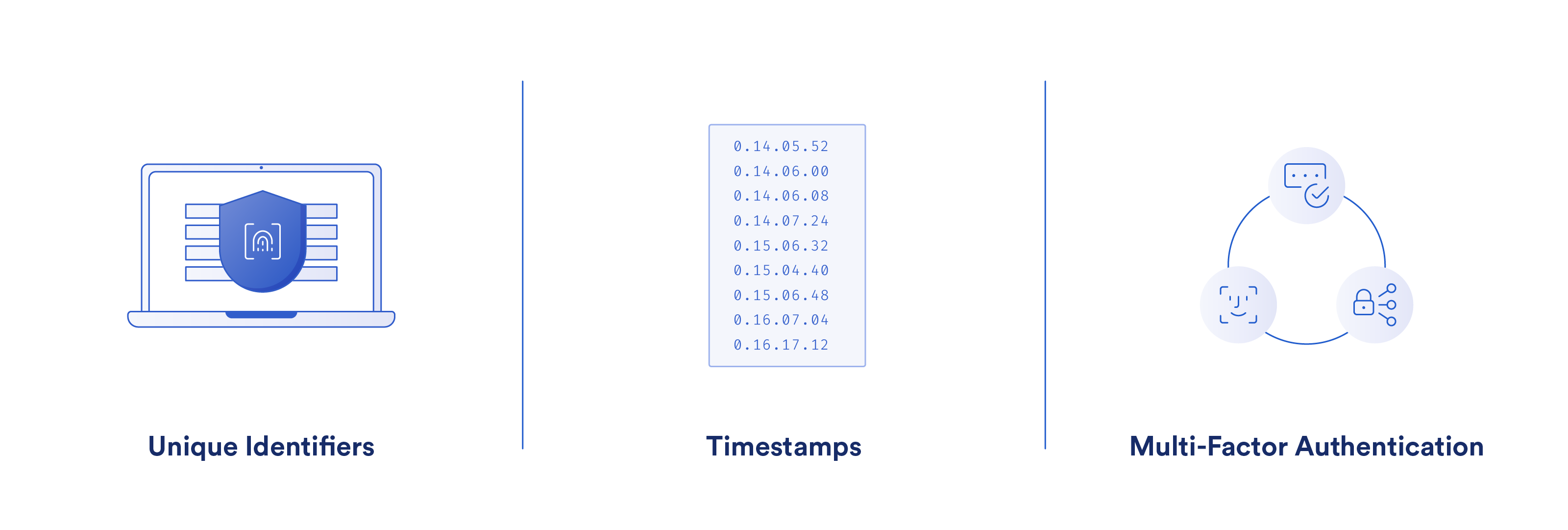What Is a Replay Attack?
As technology advances, the integrity and security of society’s online transactions, data, and identities are is of paramount importance.
From online banking to social media and various forms of digital identity, we are increasingly entrusting digital systems with mission-critical societal functions. With this progress, the sophistication, frequency, and attack surface of cyberattacks continues to increase.
This blog dives into a specific and well-known cyberattack known as a replay attack.
Replay Attacks Explained
Replay attacks occur when an attacker intercepts an existing message—often encrypted—and maliciously retransmits the valid message to the receiver to gain authentication or initiate fraudulent actions on a network. Simply put, in a replay attack, an attacker effectively masquerades as a valid message sender by intercepting and then “replaying” the same valid message repeatedly to the receiver.

Replay attacks are known for their simplicity. They don’t require complicated tasks such as cracking encryption codes or exploiting software vulnerabilities. Instead, replay attacks solely require an attacker to capture, store, and reissue valid messages sent by valid network participants without being detected by the network. They’re often used to perform unauthorized actions, duplicate transactions fraudulently, or impersonate users.
Replay Attack Examples
Replay attacks are a fairly universal concept in cybersecurity. From online banking transactions to keyless car entry, replay attacks are a security concern whenever an authenticated message authorizes a specific action. This action can be unlocking a car, sending a banking transaction, or any other number of security-sensitive actions.
Below are three real-world examples of how replay attacks could work.

Online Banking
A simple example of replay attacks can be seen in online banking. When a user initiates a transaction such as transferring funds to another user, the validity of the transaction is often authenticated using a digital token or signature.
In a replay attack, an attacker captures a transaction message, which includes an encrypted digital token or signature, and then replays the exact transaction in a repeated manner to potentially transfer funds multiple times without the user’s consent by using the same message repeatedly.
Without specific protections in place, the online banking network might assume these duplicated transactions are valid because they are being sent using an accepted digital token or signature.
Keyless Car Entry
Keyless car entry often works using specific radio waves that, when transmitted in close vicinity to the car, unlock the vehicle.
In a replay attack, an attacker can place a device near a keyless-entry car to capture the specific radio frequency used to unlock a car and store it for later use. Again, without the proper protections in place, this would give the attacker the ability to unlock the car in a repeated manner because they have captured the particular radio frequency that acts as authentication for entry.
Network Authentication
Businesses often house sensitive information within networks, with key security measures such as authentication processes set in place to ensure only valid participants can access particular information.
A replay attack in a network communications setting involves intercepting a successful authentication process—often using a valid session token that gives a particular user access to the network—and replaying that authentication to the network to gain access.
Again, this does not require any decryption or software vulnerabilities. If the attacker can sneak into the middle of the transmission and then replay it later for the recipient exactly as it has been sent, the network can be fooled into giving the attacker access to the network.
Replay Attack Prevention
So how do you prevent a replay attack? Replay attacks are a well-known cybersecurity threat for security-sensitive networks, and the protective measures against them—just like the attacks themselves—are fairly simple:

Unique Identifiers
One way to defend against replay attacks is to require that sensitive data transmissions, authentication sessions, and other key information have random or unique identifiers, such as a nonce value. Remember, the essence of a replay attack is that the attacker replays the exact message of a valid recipient as a form of fraudulent duplication.
By requiring each message to be unique, which is often achieved using generated randomness, a network can identify and reject repeated transactions because they’ve re-used a previous identifier.
Timestamps
Similarly, timestamps are a widely used tool for preventing replay attacks. Because timestamps cryptographically ensure the time a message has been sent, they can be used to set arbitrary time spans that determine the validity of messages.
For example, a message timestamped at 12PM ET can be considered valid for a total of five minutes, drastically reducing the efficacy of a replay attack because there is only a short time span in which it can be used. The captured data is effectively useless after this period.
Multi-Factor Authentication
Multi-factor authentication, also known as MFA, is another useful tool to prevent replay attacks because it adds additional authentication steps that are not part of the original data transmission.
For example, imagine a low-security network is susceptible to a replay attack, but a valid network participant has set up MFA for their account. Because it is a low-security network, a replayed message of the session token is accepted by the network. However, the attacker is then faced with secondary authentication, which could require biometric signatures or access to a physical device—requiring the attacker to have further access to a sender’s devices or data.
Practice Defense-in-Depth
Replay attacks fall into a wider subset of “man-in-the-middle” attacks, and are just one attack among a wide range of cybersecurity threats that could potentially compromise a network or system.
Whether a cloud network, an in-house network, or a blockchain network, defense-in-depth cybersecurity is becoming increasingly important as the era of AI and next-gen computing becomes a reality.
Explore how blockchain networks are using next-gen cryptography to protect data privacy and security:
